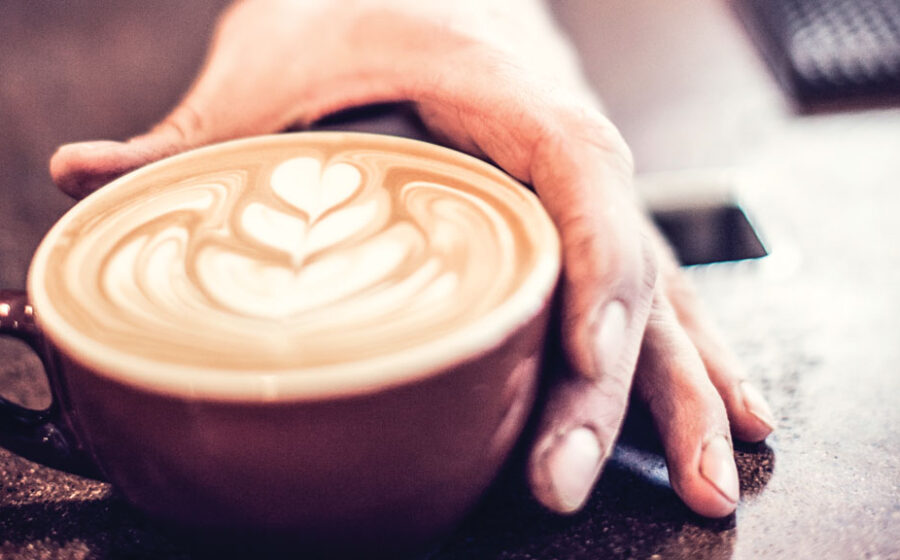[A]s a barista, it’s easy to obsess over and improve drink quality. But hospitality—how you shape your customers’ experience—is equally important as any beverage, regardless of its quality. Improving your skills in terms of hospitality can be tricky, though. There is no recipe or flavor wheel to refer to when adjusting your customer service. Behind the bar, it’s easy to lose perspective on what it’s like to be a customer at your own café.
The best way to improve your own hospitality is to visit other cafés. Your experience as a customer can help you evaluate your own methods and the customer experience at your café. As a customer, ask yourself questions: What makes this service good or bad? Am I comfortable or annoyed? Do I feel valued or dismissed? Are the good or bad aspects of my experience systemic, managerial, or the result of an individual? When you scrutinize your experiences elsewhere, it’s easy to see how you can improve. In order to do a little hospitality research of my own, I headed to Denver—somewhere I had never been, where nobody knew my name. Here are some lessons in hospitality, experienced at a handful of cafés.
Lesson One: match your customer’s pace. My first stop was at Novo Coffee, during a slow time mid-afternoon. I ordered an espresso and sat at the counter and watched the barista work. He could tell that I was in no rush and open to interaction, so he engaged me in conversation—my thoughts on the espresso, what I was up to that day. Another customer walked in and ordered a coffee to go, and he helped them promptly and with a smile, but without too much conversation. I ordered a beer but the barista didn’t make me get off my barstool to pay. Next to me at the counter were two women deep in conversation—the barista let them talk without interruption.
He did everything right; he could have let me stare into space as he worked, but instead he entertained me. Rather than asking the coffee-to-go customer which of three coffee varieties and three brew methods they preferred, he sensed their urgency and handed them a cup from the batch brewer. The women next to me at the counter were there to talk to each other, not the barista, and he respected their privacy.
My second stop presented Lesson Two: be mindful of noise. The first thing I noticed when entering Huckleberry Roasters was its small size. As I stood in line to order, one of the baristas set a finished drink on the counter and twice she shouted, “CORTADO!” even though the guy who ordered the cortado was sitting less than ten feet in front of her. It was jarring in such a small space, and the barista could have said, “Excuse me, your cortado is ready,” instead of simply shouting the name of his drink.
After this incident, though, Huckleberry excelled in terms of ambiance. It was a gloomy day, but the baristas’ electro-pop music selection brightened it up. It was turned up pretty loud for such a small café, but it worked. The baristas were chatting as they made drinks, but their conversation wasn’t loud enough for the whole room to hear. They were using a rubber spill mat, like you’d see at a bar, to tap bubbles out of steamed milk and to settle espresso into portafilters. There was no metal-on-countertop banging like I’ve heard in countless other cafés. When I left Huckleberry, I felt simultaneously relaxed and energized.
My last two café visits formed opposing halves of Lesson Three in hospitality: instruct and educate. Just up the street from Huckleberry, I entered another café and ordered a house coffee from the barista. After ringing me up, she handed me an empty mug with no explanation. Our interaction was clearly over, so I walked around the corner of the bar until I found an airpot. Apparently it was a self-serve situation, but the barista didn’t instruct me whatsoever. Simply saying, “The coffee is at the end of the bar,” would have prevented me from feeling like a moron, wandering around with an empty mug.
The next day, my experience at Amethyst Coffee Company was the polar opposite. As soon as I walked through the door, one of the baristas invited me to sit anywhere—he would take my order at the table. He brought a large glass of water and a small glass of cascara tea. I ordered an espresso pairing, which came with sherry and also bitters with soda. Another barista delivered my order, and she described the various characteristics of the espresso and the sherry. She explained that because she had to substitute the espresso on the menu for a different one, she chose her house-made rose bitters with soda to go with it.
The baristas knew it was my first time at Amethyst but didn’t know I was a coffee professional. None of their attempts at customer education—whether about how they do things or about the beverages themselves—felt superfluous or patronizing, though. Amethyst embodies hospitality, and a single visit there would essentially summarize all three lessons: they matched my pace, they had a noise-free ambiance, and they educated me. I’m sorry to say, but you could have just visited Amethyst instead of reading this article.
—Cody Kirkland is the the manager of the Rose Establishment in Salt Lake City.
















